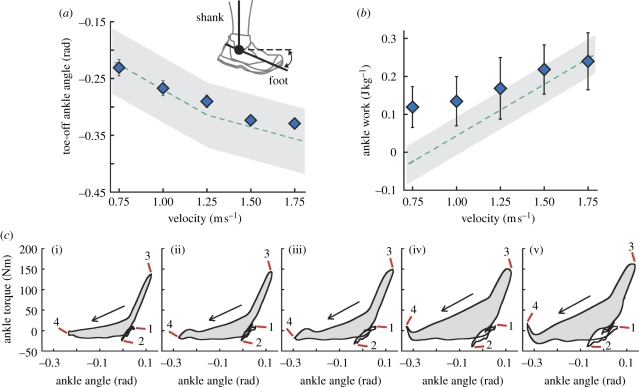Figure 2.
Ankle angle, work and torque versus angle across walking velocities. (a) Average ankle angle at toe-off and (b) ankle work per step during the stance phase of walking for PWA using the powered prosthesis (blue diamonds) were within 2 s.d. of the mean data for non-amputees (green dashed lines). Non-amputee toe-off data are extrapolated from Winter [22] and ankle work data are from Palmer [23]. The foot segment is perpendicular to the shank segment at an ankle angle of zero (inset in (a)). Error bars indicate s.e.m. Grey shaded areas represent ±1 s.d. of the non-amputee average. (c) The prosthetic ankle joint torque versus angle for a representative participant with an amputation using the bionic prosthesis illustrates the positive work (grey shaded areas within the traces) provided by the prosthesis. 1, heel strike; 2, foot flat; 3, maximum dorsiflexion; 4, toe-off. (i) 0.75 m s−1; (ii) 1.00 m s−1; (iii) 1.25 m s−1; (iv) 1.50 m s−1; (v) 1.75 m s−1.

